
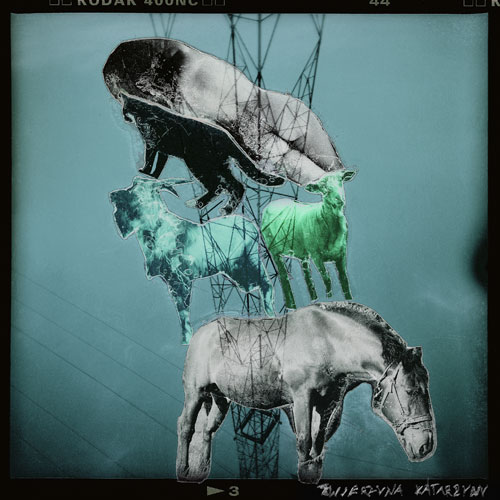
80 x 80 cm, Lambda print
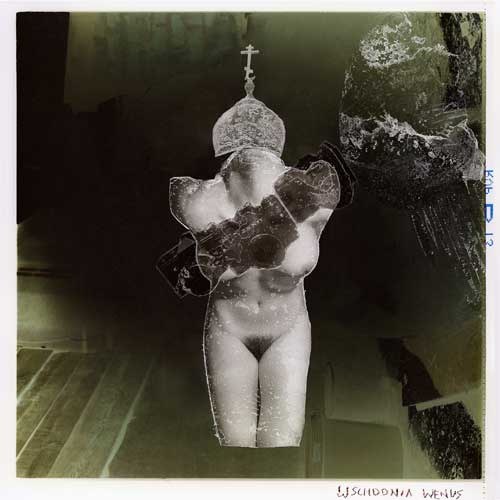
80 x 80 cm, Lambda print
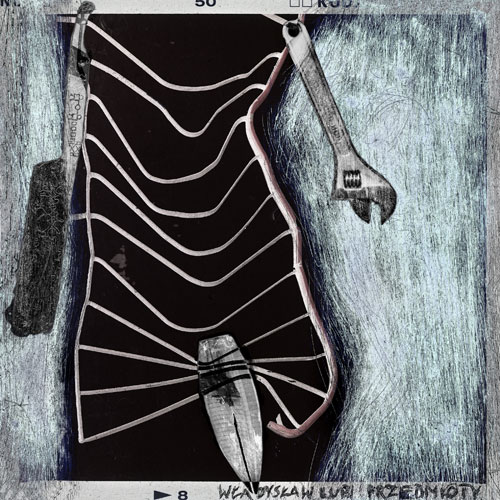
80 x 80 cm, Lambda print
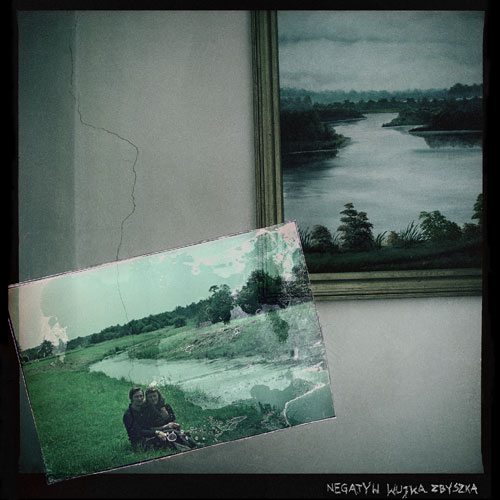
80 x 80 cm, Lambda print
Rafał Chmielewski’s Photo-Commentaries
Process
The final form of Chmielewski’s works is the outcome of a traditional process, based on combining a few fragments of various prints and thus producing one, artificially constructed whole. The photographer is not trying to deceive the viewer, by no means, in spite of the fact that he makes his works look like realistic pictures. In Chmielewski’s photo-montages we can easily identify ingredients from various sources. The diversity of materials used is striking - traditional negatives are combined with diapositives; the aesthetics of inversion is a counterpoint for positive "cut-outs"; the cold colours of various shades of blue, green and tourqouise correspond to achromatism which sometimes actually dominates. But the author’s manipulations are not restricted to "glueing" things together. Sometimes in his works we can clearly see the residue of a gooey substance; scratches are also frequent. Chmielewski signs his works "scratching" his name in the emulsion on the edges of successive frames, indicating one of the few possible ways of interpreting the work produced in such a way.
Function
Both in the case of photo-montages produced for advertising purposes and those which were often used in political debates, the main object of such works has always been the message, based on the combination of symbols borrowed from various sources. Seen from this angle, the technique of photographic montage reveals its close analogy with language, which in this case is sometimes based solely on pictograms, though sometimes the images are accompanied by words or letters. Symbols (verbal and pictorial), combined within one work, also resemble sentences carrying concrete contents. Frequently the most important "words" of "sentences" constructed in such a way were emphasized by the structure of the composition or its proportions. Therefore the message contained in the photo-montage could assume the form of a simple riddle, although complicated puns also appeared. Rooted in traditional emblems, words and images begin to interact and demand a reading as a whole, ignoring the diversity of the symbols used. That is why advertising usually combines the product with its description. It is thanks to such a structure of "sentences" composed of words and pictures that political photo-montages could manifest authorial opinions clearly. What do photo-montage "sentences" by Chmielewski speak about? The majority of works presented at the FF Gallery is a commentary on those artistic phenomena in which the technique in question takes on a critical function - although we do not have to do here with evaluative criticism. Chmielewski’s works are rather a kind of criticism of interpretation or commentary with regard both to the works themselves, as well as to some contemporary artists.
Quotation
One of the most important features of postmodernism is the "quoting" of other works, typically in the form of "copying, pastiche, ironic allusion, imitation and doubling…"1 Even though the linguistic dimension of photo-montage favours quoting, Chmielewski’s works do not seem to fulfill the postmodern criteria. The subject of his successive prints is not the work’s "unoriginality" or the "literalness" of postmodern quotation. The cut-outs in the montage only rarely come from reproductions of works by other artists. Instead Chmielewski’s critical commentaries sometimes become a much more traditional hommage to the characters and works quoted by him, or in other cases they are the effect of free inspirations and associations. An example of this type of quotation may be the work called Sophie’s World which apparently relates to a popular philosophical book, but in reality refers to the figure and art of Zofia Rydet - which is easily confirmed by the constituent elements of the composition. Another photo-montage - Catherine’s Animals - clearly comments on the famous Animal Pyramid by Katarzyna Kozyra. Works like Heads Falling from Józef’s Chair and Władysław Likes Objects quote works by Robakowski and Hasior. This last example is worth some more attention.
Symbolic Object
The "sentential" nature of photo-montages causes a situation in which individual "words" gain meaning only in the context of the whole utterance. In other words, the symbolism of a single sign depends on other signs. That is why in Chmielewski’s works fragments of the human body, objects and space, cut out from other photographs, connote completely new contents. The above-mentioned photo-montage - Władysław Likes Objects - is an example of such a situation: the crooked and twisted railing takes on the shape of a female body; a monkey-wrench and a razor take over the function of hands, and the meaningfully situated fragment of the Monument of Revolutionary Exploits in Rzeszów becomes a vaginal symbol. Chmielewski often uses popular objects which are easy to identify. This is the result of conducting a dialogue with pop-culture, typical for artists who employ the photo-montage technique. In such photo-montages as Eastern Venus or Venus of Capital City, Chmielewski - using well-known objects, like the Soviet "Zenit" photographic camera - attempts to comment on contemporary social myths. Also the work called Uncle Zbyszek’s Negative has to do with popular culture, although this time it appears in the form of ordinary, everyday iconography.
Emotional inversion
Chmielewski is undoubtedly an exploring artist, which is confirmed by the fact that he employs various techniques, forms and methods of photography. Not counting the works presented at the FF Gallery, which rather belong to experimental photography, the author in the past also presented classical documents from time to time. But his current exhibition in Łódź is not restricted to the photo-montages described above. For instance the work called Next Christmas Will Not Be the Same As It Used To Be is an example of a work in which an interesting formal and semantic effect has been achieved thanks to the inversion of the negative. The negative print shows fragments of Christmas trees, discarded after Christmas. It is a seemingly banal situation, but this tonal inversion has significantly influenced the aesthetics of the work and created a nocturnal atmosphere - since it is blackness that dominates in it. However, it is not a typical image of the night, as the winter scene presented in the photograph undergoes more inversions. Especially meaningful is the inversion of heaven and earth. If the whiteness in the upper part of the frame makes us think of snow, blackness shown at the bottom can be associated with the sky at night. In this way the positive-negative inversion is accompanied by the changing of day into night and by the inversion of the relation earth/heaven. In this context the title of the work, scratched on the negative, seems especially important, the title which also points to an inversion, this time of a linguistic character. The use of negation ("will not") symbolically refers to the hope of the transformation of "next Christmas" of the title, which should be different and therefore contrary and inverted in relation to last Christmas holidays. Next year during Christmas there will be no place for NEGATIVE emotions.
Key to Interpretation
The work of an art critic is based most of all on the interpretation of works which he/she analyzes. The critic usually turns his attention to those elements of a given image which form a coherent narrative that facilitates the composition of a text - the material outcome of critical interpretation. Nowadays these narratives not always - or strictly speaking, rarely - aim at the identification of the artist’s true intentions. A symbolic image of this type of criticism may be detected in the photograph called Where is the Key? in which Chmielewski again employed the aesthetics of inversion. This photograph shows the interior of a garage in which we can see many different tools. In the centre of the composition we will find a white outline of one of them - a monkey-wrench - produced most probably by cutting out its shape in the negative. In the most simple of interpretations this picture may be considered to be a combination of two kinds of symbolic absences - one created by means of inversion and the other by cutting out the wrench’s outline. This observation may be confirmed by the question of "presence" contained in the title. However, the work as a whole brings to mind a metaphorical "critical workshop" in which the critic who enters the "interior" of a work, symbolized by the inversion of the image, looks for the proper "key" to its interpretation. Thanks to such original combinations and surprising compositions, Chmielewski’s photo-commentaries enable the critic to produce various critical narratives, and at the same time allow him to find many different interpretational "keys".
Witold Kanicki

80 x 80 cm, Lambda print
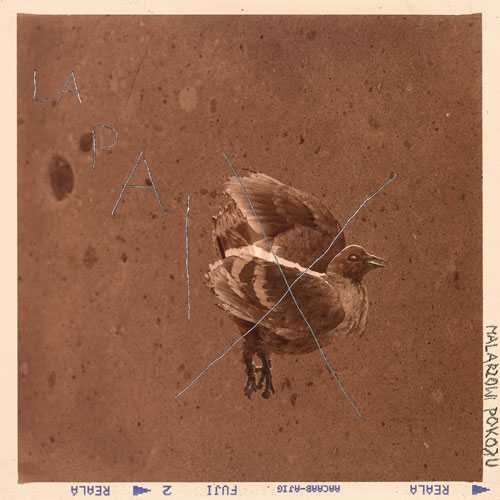
80 x 80 cm, Lambda print
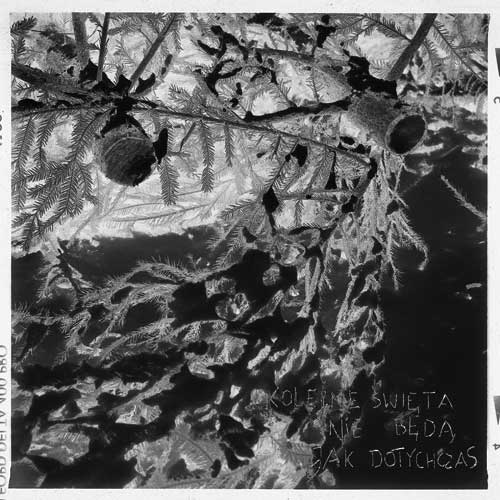
80 x 80 cm, Lambda print
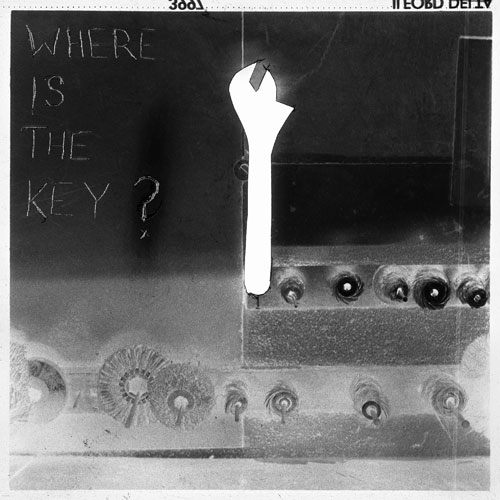
80 x 80 cm, Lambda print
Next exhibition
3.4.2009
Copyright ©2009 Galeria FF ŁDK, Rafał Chmielewski, Witold Kanicki